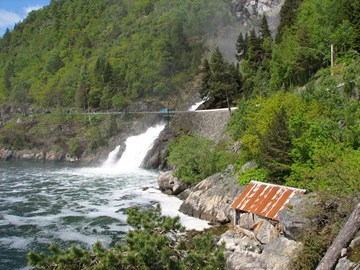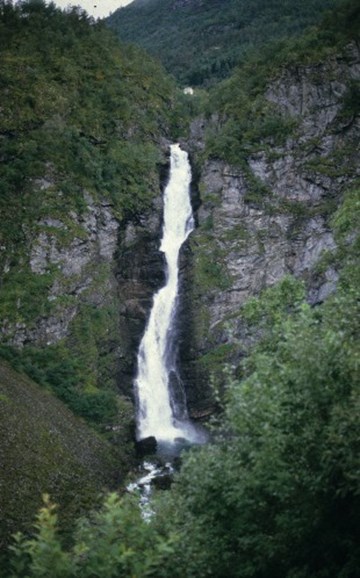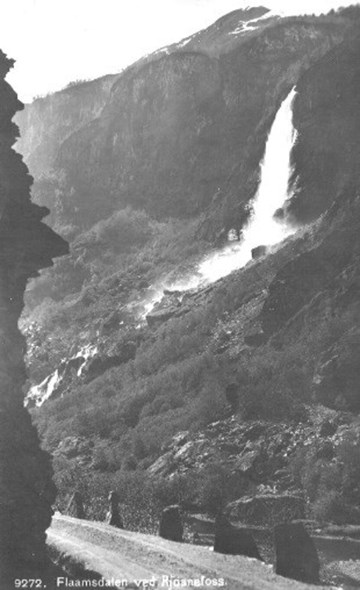


In 1900 the topographer Amund Helland described the river of Kvinnaelva with these few words: ".. a short watercourse, running southwards - with the picturesque Kvinnefos cascading into the Sognefjord." A landscape protection report a hundred years later follows up with: "The Kvinnefossen waterfall (..) one of the finest waterfalls along the Sognefjord."

The impressive waterfalls in the innermost part of Nærøydalen - Sivlefossen and Stalheimsfossen are famous tourist attractions. They are both examples of rivers that formerly ran towards Voss. The reason for this is that the river of Nærøydalselvi in the course of hundreds of thousand years has eroded the valley and thus changed the fall direction of a number of tributaries now running towards Sogn.

There are as many as 25 waterfalls of various sizes along the Nærøyfjord. The waterfall called Kjelfossen is the most impressive of these, but there are also others that are worth mentioning.

In the valley of Flåmsdalen and along the Aurlandsfjord the landscape is dominated by a number of waterfalls. Some of them are among the most famous tourist attractions in Norway, such as the waterfalls of Rjoandefossen and Kjosfossen in the river of Flåmselvi. Flåmselvi was protected against any hydro-electric development in the so-called "Verneplan III" (Protection Plan III) for watercourses.